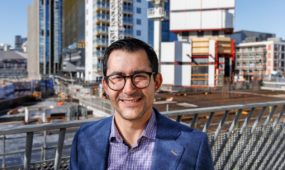Century-old fertility technique a viable IVF alternative
Health & Medical
A FERTILITY technique first used 100 years ago has been proven to be as effective at helping couples conceive as IVF treatment.

Sign up to receive notifications about new stories in this category.
Thank you for subscribing to story notifications.
A study by researchers from Australia and the Netherlands has demonstrated that the century-old procedure known as hysterosalpingography (HSG) was a significantly cheaper and less traumatic alternative for infertile couples.
HSG involves the flushing of fallopian tubes with either an oil-based or water-based iodised solution.
Known as the H2Oil study, the project examined the benefits of HSG in more than 1100 women with unexplained infertility.
Of the 1119 patients in the study, about 40 per cent of infertile women in the oil group and 29 per cent of infertile women in the water group achieved successful pregnancies within six months of the technique being performed.
According to IVF Australia, the success rates of IVF range from about 40 per cent for women under 30 years, to 8.5 per cent for patients over 40 years.
The results were published today in The New England Journal of Medicine and will be presented at the 13th World Congress on Endometriosis in Canada by project leader Ben Mol, from the South Australian Health and Medical Research Institute (SAHMRI) and University of Adelaide.
Professor Mol, whose mother was able to conceive after undergoing the procedure in the 1960s, said although HSG and IVF had similar success rates after the first cycle, patients were paying up to 20 times more for IVF.
“HSG offers an advantage cycle over cycle but IVF only gives you one good chance,” he said.
“Over the past century, pregnancy rates among infertile women reportedly increased after their tubes had been flushed with either water or oil during this X-ray procedure.
“Until now, it has been unclear whether the type of solution used in the procedure was influencing the change in fertility.”
The study involved researchers from the VU University Medical Centre in Amsterdam and 27 medical centres in the Netherlands.
The oil-based product used in the study was Lipiodol Ultra-Fluid, an iodised solution of fatty acids from poppy seeds. It is available in 47 countries around the world.
HSG was first carried out in 1917, and since the 1950s both water-based and oil-based solutions have been used.
Professor Mol said it had been long believed that flushing a woman’s fallopian tubes could benefit fertility by removing debris that hinder fertility.
“My mother went from being infertile for many years to becoming pregnant, and I was born in 1965. I also have a younger brother. So it’s entirely possible – in fact, based on our team’s research, it’s highly likely – that my brother and I are both the result of this technique helping my mother to achieve fertility,” he said.
“The reality is, we still don't really understand why there is a benefit, only that there is a benefit from this technique.”
The National Health and Medical Research Council in Australia supported the study.
Associate Professor of Social Work and Social Planning at Flinders University Damien Riggs has published a number of studies involving pregnancy loss, fertility, social infertility and the impacts of IVF on lesbian and gay couples.
He said couples that opted for IVF treatments often found the process took an emotional toll.
“If you’re doing hyper stimulation to retrieve eggs that means you are taking high doses of hormones, which can often make it very emotional and of course, forcing your ovaries to produce multiple eggs can physically be a very painful process,” Associate Professor Riggs said.
“Some of IVF is covered by Medicare (health insurance) but the gap means that certain people can’t afford it or can only afford one or two rounds, so if you are not successful that can leave you high and dry.”
South Australia’s capital Adelaide has three long-standing public universities, Flinders University, University of South Australia and the University of Adelaide, each of which are consistently rated highly in the international higher education rankings.
SAHMRI opened in late 2013 and is in the new Adelaide BioMed City precinct, a $3.6 billion tripartite health hub comprising a soon-to-be-opened major hospital, research centres and educational institutions.
SAHMRI is home to about 600 researchers working across seven themes: Heart Health; Infection & Immunity; Aboriginal Health; Mind & Brain; Cancer; Healthy Mothers, Babies & Children; and, Nutrition & Metabolism.
Jump to next article



